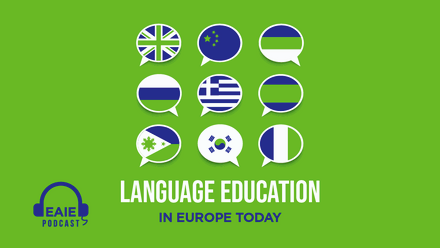Open laptops for inclusive international classrooms

The debate still roars within the higher education classroom as to whether we should be allowing technology without restriction or trying to limit its impact on our learners’ attention
Some support banning tech, particularly laptops and phones, mostly because they choose to focus their arguments narrowly on very specific lab-like cognitive studies on the effects of technology on the brain and our capacity for attention. But of course, our learners are not seated in idealised labs where they’re subject only to a limited number of variables; they are instead parts of classrooms, and interact with others socially and in multiple complex dimensions.
This is why other academics are quick to point out the benefits of technology use, in that it enables our learners to navigate these complex and diverse interactions successfully while optimising their strengths. Tech allows our learners to network, connect with the outside world and tap into a body of collective intelligence. It helps them to take on multiple and subtle roles in the classroom, instead of just remaining passive listeners.
It will be very difficult to ever settle the question of technology use in the higher education classroom, because the theoretical perspective of those trying to settle the issue often vary widely from one another. And thus, technology use is likely to remain, for the near future, a matter of personal choice on the part of the instructor, a position very much aligned with the notion of academic freedom. Few departments are ever likely to try and step into this hot topic area in a decisive way.
A pressing issue for some
This is all very well, and will satisfy the majority of our learners who will probably be fairly content with a happy balance between instructors who allow them technology use in class – and even encourage it by embedding this in teaching and learning – and those who don’t. For some learners however, the issue is more pressing, and the current state of play may be more demoralising.
One group of stakeholders who will see things differently is of course students with disabilities. In their case, tech use is often a human rights issue. Accessibility services on many campuses around the world are engaged in an ongoing battle to create awareness among instructors that technology is often the very basis of accommodations and accessible learning. Many students with disabilities would also like to access technology in the classroom, to support their learning, without having to disclose their disability or risk being stigmatised among peers – and therefore would wish to see this tech use as universal, as opposed to something that makes them stand out in the lecture hall.
It is not just students with disabilities, however, who depend so crucially on tech use in the classroom. Our international students are equally reliant on technology and tech tools in their learning. Sadly, they on the other hand are not as easily able to make an appeal to human rights, or to benefit from the support and advocacy of accessibility services. They are left to fend for themselves and to self-advocate in an environment that has become increasingly polarised.
Including international students with tech in the classroom
We can be quick, as faculty, to dismiss the use of technology by international students in the classroom, on the basis that we feel that they – more than others – need to remain focused on content. A few years back, a faculty mentor observing one of my classes (a Masters of Education class made up entirely of international students) and commenting on the fact she did not understand why I allowed them all to have their laptops open in class. What I suggest to any instructor entertaining this doubt is to allow students to use their laptops and to just do some walkabouts in class in order to satisfy your curiosity, and explore exactly how your students are using these tools.
I have done this many times; it has been very refreshing and has reassured me deeply of the benefits international students draw from their use of tech tools in the classroom. Very often international students and second language learners will have translation tools and search engines open and ready to look up concepts they are not familiar with, as well as notes and PowerPoints from the course which often they have annotated to clarify terms and concepts that were new to them. Technology, far from being a distraction, becomes a revolutionary platform of support for their learning, and is often an essential part of their success as learners.
A model to promote reflection and awareness around this pressing issue
There is a pressing need to go beyond the anecdotal and to theorise about the tech use of our international students in the higher education classroom. Resistance and reticence among faculty are still commonplace and it is too easy to dismiss a dimension of the learning experience which for many is essential, and often marks the difference between failure and success. In order to create systemic awareness around this issue, we need literature that highlights this theme.
Faculty are often yearning for a theoretical framework that allows them to integrate technology in a way that specifically connects it with inclusion. In this sense, Universal Design for Learning (UDL) is increasingly becoming the tool we need to familiarise faculty with the way tech supports learning for many, in a crucial way. It is also a framework that is useful in allowing faculty to autonomously continue a reflection on their practice with regards to diverse learners and their needs.
There is every hope UDL will now allow faculty to think proactively about tech use in relation to the inclusion of international students, and this reflection is likely to go beyond the use of laptops in class: it will bring new light to the use of learning management systems, the provision of digitalised class notes in advance of lectures, the integration of social media to encourage participation in those who may be more hesitant, and more. In the end, allowing an open laptop can create a more open classroom.






